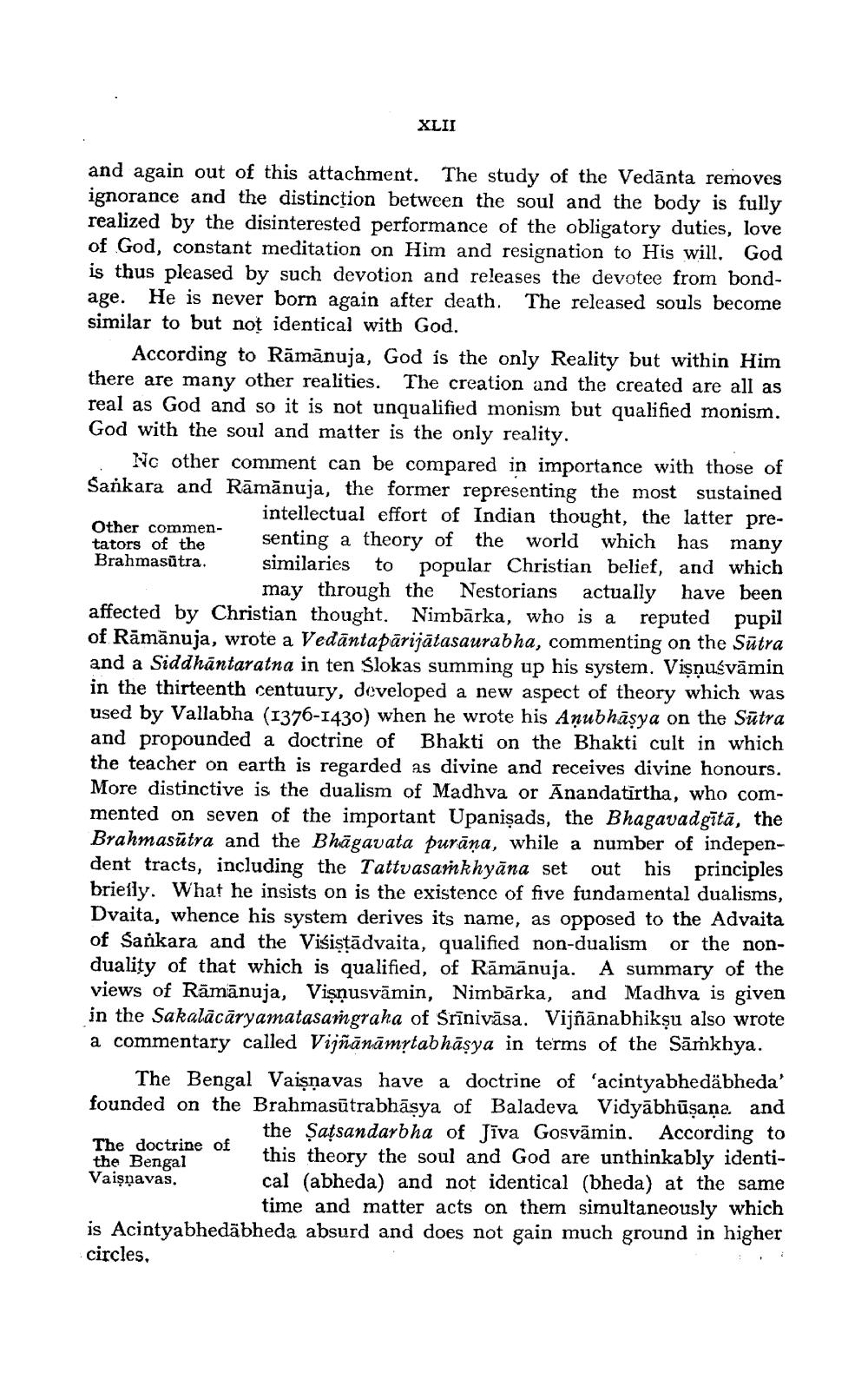________________
XLII
and again out of this attachment. The study of the Vedānta removes ignorance and the distinction between the soul and the body is fully realized by the disinterested performance of the obligatory duties, love of God, constant meditation on Him and resignation to His will. God is thus pleased by such devotion and releases the devotee from bondage. He is never born again after death. The released souls become similar to but not identical with God.
According to Rāmānuja, God is the only Reality but within Him there are many other realities. The creation and the created are all as real as God and so it is not unqualified monism but qualified monism. God with the soul and matter is the only reality.
No other comment can be compared in importance with those of Sankara and Rāmānuja, the former representing the most sustained
intellectual effort of Indian thought, the latter preOther commen
senting a theory of the world which has many tators of the Brahmasūtra. similaries to popular Christian belief, and which
may through the Nestorians actually have been affected by Christian thought. Nimbārka, who is a reputed pupil of Rāmānuja, wrote a Vedāntapārijātasaurabha, commenting on the Sūtra and a Siddhāntaratna in ten Slokas summing up his system. Visnuévāmin in the thirteenth centuury, developed a new aspect of theory which was used by Vallabha (1376-1430) when he wrote his Anubhāşya on the Sutra and propounded a doctrine of Bhakti on the Bhakti cult in which the teacher on earth is regarded as divine and receives divine honours. More distinctive is the dualism of Madhva or Anandatirtha, who commented on seven of the important Upanişads, the Bhagavadgītā, the Brahmasutra and the Bhāgavata purāna, while a number of independent tracts, including the Tattvasamkhyāna set out his principles briefly. What he insists on is the existence of five fundamental dualisms, Dvaita, whence his system derives its name, as opposed to the Advaita of Sankara and the Visistādvaita, qualified non-dualism or the nonduality of that which is qualified, of Rāmānuja. A summary of the views of Rāmānuja, Visnusvāmin, Nimbārka, and Madhva is given in the Sakalācāryamatasargraha of Srīnivāsa. Vijñānabhikṣu also wrote a commentary called Vijñānāmytabhāsya in terms of the Samkhya.
The Bengal Vaisnavas have a doctrine of facintyabhedäbheda' founded on the Brahmasūtrabhāsya of Baladeva Vidyābhūsaņa. and
the Satsandarbha of sīva Gosvamin. According to The doctrine of
this theory the soul and God are unthinkably identithe Bengal Vaisnavas.
cal (abheda) and not identical (bheda) at the same
time and matter acts on them simultaneously which is Acintyabhedäbheda absurd and does not gain much ground in higher circles.




